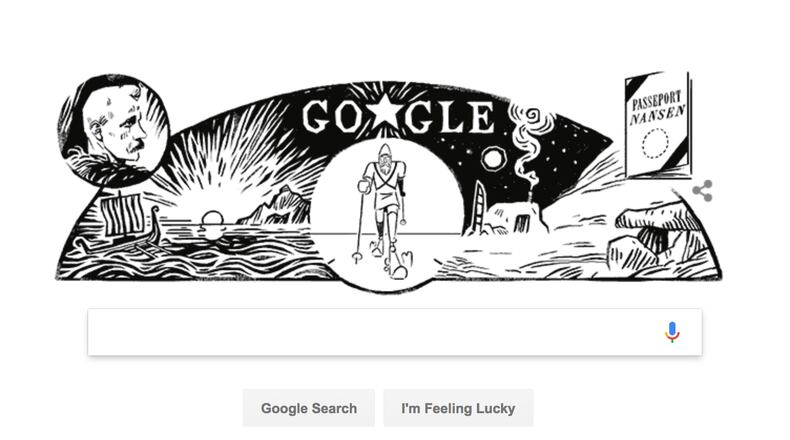To commemorate the 156th birthday of famed Norwegian explorer Fridtjof Nansen, Google created an animated doodle for its homepage.
Here are seven things to know about the legendary adventurer:
He was born in Oslo, Norway.
Nansen was born on Oct. 10, 1861. According to the official website for the Nobel Peace Prize, his father was a successful lawyer with high morals and his mother was both strong-minded and athletic.
Nansen's athletic abilities and love for the outdoors came at an early age and as a boy, Google wrote, he was "gripped by a sense of adventure."
He became the first to explore the snow-capped interior of Greenland.
In 1888, Nansen and his team of six overcame bitter temperatures during a two-month expedition to trek the unexplored interior of Greenland, an adventure that "yielded a wealth of data about the uninhabitable expanse," the Independent reported.
He attempted to become the first person to reach the North Pole.
According to the Independent, the cross-country skiier joined the Zootomical Institute (his alma mater) for a journey across the Arctic in his polar vessel, "Fram."
But when the ship drifted too far down south and wouldn’t make it closer to the North Pole, he and a colleague, Hjalmar Johansen, and their team of 28 huskies left it and the crew behind and began to ski.
Unfortunately, as conditions worsened, they had to turn around much earlier. Still, the two went farther up north than anyone had gone.
More at Nobelprize.org.
He won a Nobel Peace Prize for “helping those without a voice find a home.”
In 1922, Nansen was awarded the honor for his humanitarian work before and after World War I.
The war shifted his adventurous interests to international politics and eventually, Nansen was appointed to some of Norway’s most prominent positions, including the League of Nation’s first High Commissioner for Refugees.
His efforts included relief work during the severe famine in the Soviet Union, the exchanges of 400,000 prisoners of war between Germany, Russia and the former Austria-Hungary and the creation of “Nansen passports” for refugees to be able to cross the border — to name a few.
According to the Independent, Nansen's humanitarian aid efforts included directing Red Cross aid to those affected in post-revolutionary Russia. Nansen is credited with saving the lives of as many as 22 million people through his planning.
"His work on behalf of prisoners of war and starving people earned him the Peace Prize," the official Nobel website noted.
Later in his life, he devoted his time to Armenian refugees and the Armenian cause.
He died in 1930.
Approximately six months before his 70th birthday, Nansen was in the middle of planning another polar expedition across the Arctic.
He died suddenly of a heart attack on May 13, 1930, and was given a state funeral on Norway's Independence Day (May 17), according to the Nobel website.
About the Author
The Latest
Featured



